Zingiber officinale
Zingiber officinale
1. The products in our compound library are selected from thousands of unique natural products; 2. It has the characteristics of diverse structure, diverse sources and wide coverage of activities; 3. Provide information on the activity of products from major journals, patents and research reports around the world, providing theoretical direction and research basis for further research and screening; 4. Free combination according to the type, source, target and disease of natural product; 5. The compound powder is placed in a covered tube and then discharged into a 10 x 10 cryostat; 6. Transport in ice pack or dry ice pack. Please store it at -20 °C as soon as possible after receiving the product, and use it as soon as possible after opening.
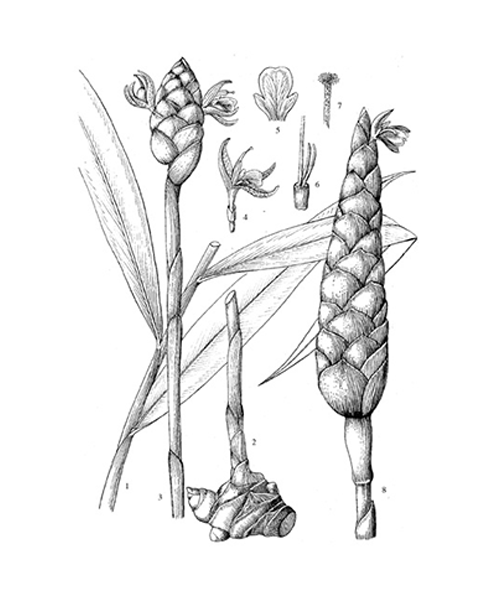
Natural products/compounds from Zingiber officinale
- Cat.No. Product Name CAS Number COA
-
BCN1192
Zingerone122-48-5
Instructions
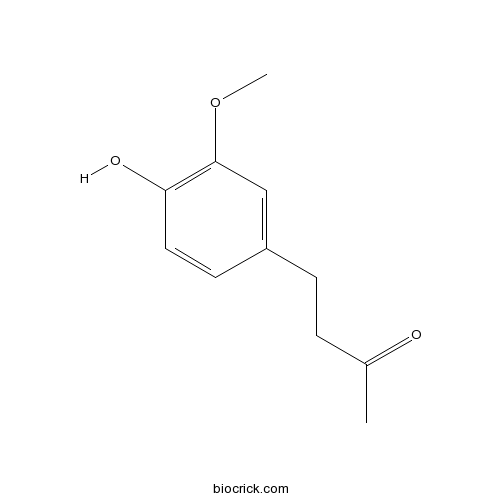
-
BCN5921
8-Gingerol23513-08-8
Instructions
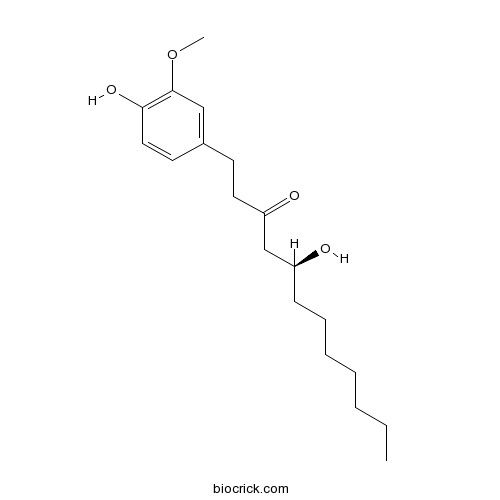
-
BCN1030
6-Gingerol23513-14-6
Instructions
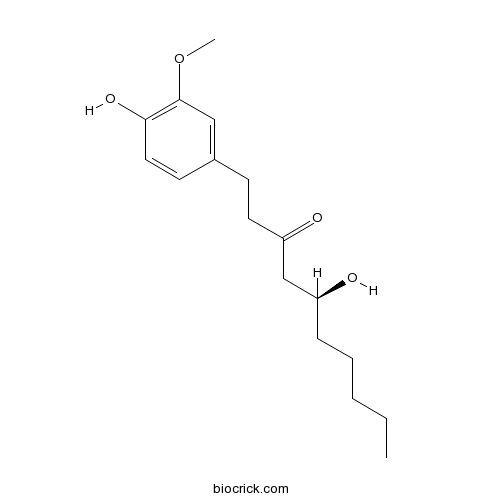
-
BCC1837
Paradol27113-22-0
Instructions
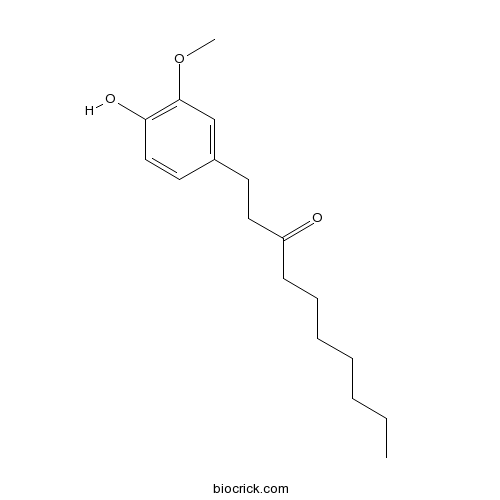
-
BCN5315
Alpinetin36052-37-6
Instructions

-
BCN4127
Guaiacin36531-08-5
Instructions
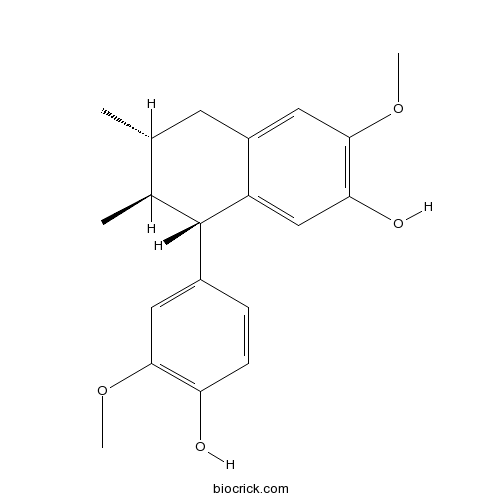
-
BCN3266
8-Shogaol36700-45-5
Instructions
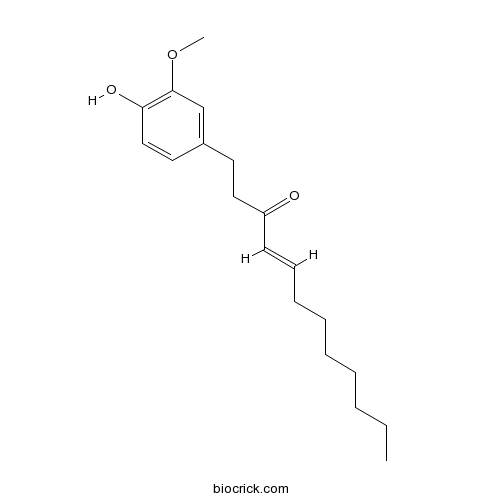
-
BCN1445
1-(3,4-dimethoxyphenyl)-2-(4-allly-2,6-dimethoxyphenoxy)propan-1-ol41535-95-9
Instructions
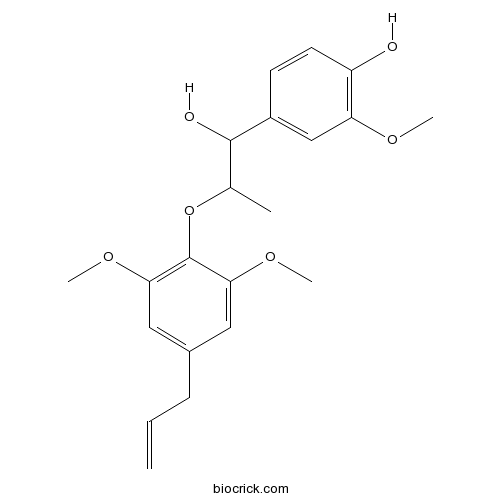
-
BCN6294
beta-Eudesmol473-15-4
Instructions

-
BCC9008
(+)-Licarin A51020-86-1
Instructions
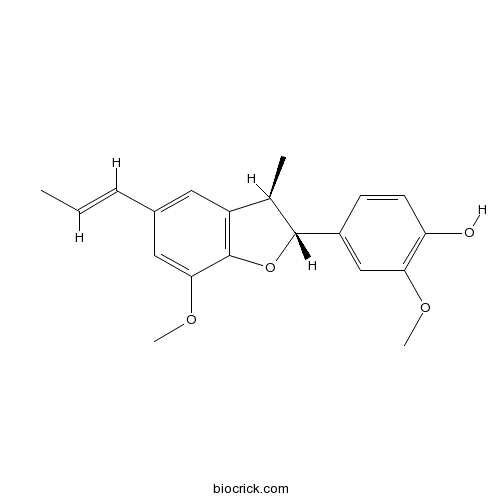
-
BCN6288
6-Shogaol555-66-8
Instructions

-
BCN2502
Isovanillin621-59-0
Instructions

-
BCC4450
Adenine73-24-5
Instructions

-
BCN3265
1-Dehydro-6-gingerdione76060-35-0
Instructions

-
BCN7813
Odoratisol A891182-93-7
Instructions
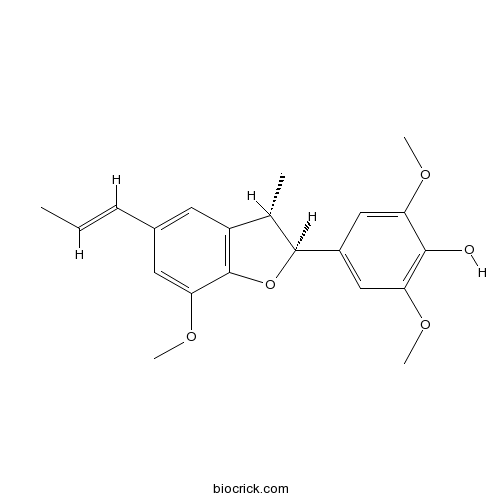
Ginger (zingiber officinale) might improve female fertility: A rat model.[Pubmed: 30093285]
Ginger (Zingiber officinale) is a well known and extensively used antioxidant in traditional remedies. In this study, we aimed to investigate the effects of ginger powder on ovarian folliculogenesis and implantation in rats.
[6]-Gingerol-induced cell cycle arrest, reactive oxygen species generation, and disruption of mitochondrial membrane potential are associated with apoptosis in human gastric cancer (AGS) cells.[Pubmed: 30091159]
Ginger (Zingiber officinale Roscoe), a monocotyledonous herb, is widely used as an herbal medicine owing to the phytoconstituents it possesses. In the current study, the quantity of [6]-gingerol, the major phenolic ketone, in the fresh ginger and dried ginger rhizome was found to be 6.11 µg/mg and 0.407 µg/mg. Furthermore, [6]-gingerol was assessed for its antiapoptotic effects in human gastric adenocarcinoma (AGS) cells evidenced by acridine orange/ethidium bromide staining technique and Annexin-V assay. An increase in reactive oxygen species (ROS) generation led to a decrease in mitochondrial membrane potential (MMP) and subsequent induction of apoptosis. Results disclose that perturbations in MMP are associated with deregulation of Bax/Bcl-2 ratio at protein level, which leads to upregulation of cytochrome-c triggering the caspase cascade. These enduringly suggest that [6]-gingerol can be effectively used for targeting the mitochondrial energy metabolism to manage gastric cancer cells.
Effect of ethanolic extract of Zingiber officinale Roscoe on central nervous system activity in mice.[Pubmed: 30084567]
Zingiber officinale Roscoe, commonly known as ginger, is a traditional herb used to treat various disorders. In this study, we evaluated potential pharmacological effects of ethanolic extracts of Z. Officinale with respect to central nervous system (CNS) activity in mice. Role of ethanolic extract of ginger on CNS activity in mice was studied using models of elevated plus maze test, barbiturate-induced sleeping time, tail suspension test, hot-plate and tail-flick test. Ginger extract was administered to mice at single doses of 50 and 200 mg/kg, perorally while diazepam (1 mg/kg), morphine (5 mg/kg) and imipramine (30 mg/kg) intraperitoneally were used as standard drugs. The results showed that the ginger extract at all dose levels significantly exhibited anxiolytic activityincreased the sleeping latency but reduced the sleeping time. Tail suspension test showed that the extract at both the doses was able to induce a significant decrease in the immobility time, similar to imipramine, a recognized antidepressant drug. Tail-flick and hot-plate tests demonstrated antinociceptive property of ginger extract, similar to morphine, a recognized antinociceptive agent. Higher dose level (200 mg/kg) showed better protective effects. Phytochemical screening of ethanolic extract revealed the presence of various phytoconstituents such as phenolic compounds, flavonoids, tannins, anthocyanins, carbohydrates, glycosides, proteins, resins and volatile oils. The possible mechanism by which ginger exhibited the significant beneficial effects on various CNS models in mice could be attributed to its antioxidant potential.


